Our original plan was to arrive in Alaska for the 50th Anniversary Iditarod Race held the first weekend in March. But as fate would have it we were derailed and arrived in late April instead. It was a blessing in disguise, as much of the state was still covered in a late winter or early spring snowfall. At this point our only commitment was taking the Matanuska Ferry to Skagway. If you have a chance to ride the Alaskan Marine Highway System we highly recommend it. It’s been one of the top things to do in Alaska. Starting from Skagway, we hoped to hike, bike and see the northern lights, otherwise we were open to letting the wilderness and wind guide us through the state known as The Last Frontier.
And what a ride it has been. Seven weeks later this is what we’ve learned about navigating Alaska:
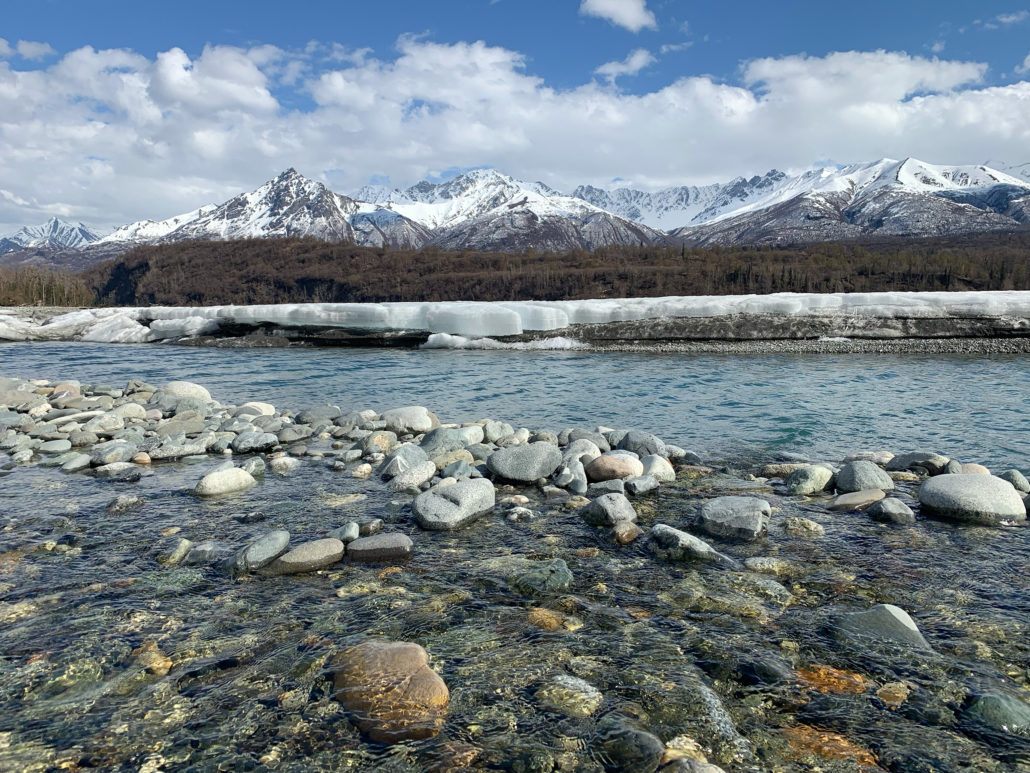
1. Northern Lights
We can’t see the Northern lights in the land of the midnight sun. Even if we were to stay up all night. Had we had been here in late February or early March we may have seen them. However, we did get a tip on seeing “Alpen Glow” when we were visiting Homer, AK. Apparently, when the sun sets, around 11:30 at night, look up to a snow capped mountain range, and there will be a light show, an optical phenomenon of swirly colored hues dancing on the backdrop known as “Alpen Glow”. At the time we were looking at the north side of the Kenai Mountain Range or Kenai Fjords National Park. However, that day we did an 8 mile hike to the Grewingk Glacier and we were so exhausted when we got back that we missed it. Hopefully, we will be able to see it another time.
(Note: This post contains affiliate links. We may earn compensation when you click on the links at no additional cost to you.)
In regards to the midnight sun, you might want to have some kind of eye shade that can help with sleeping through the night. I have one from Infinity that I love. I got it when I was working night shift. What makes is so comfortable is it has little pillows surrounding your eyes so you can naturally blink, it’s made of a soft terry cloth material and has a velcro strap that is adjustable for a comfortable fit. Tim also wears one from, sleep master. Those are just a few of so many to choose from.
2. Connectivity
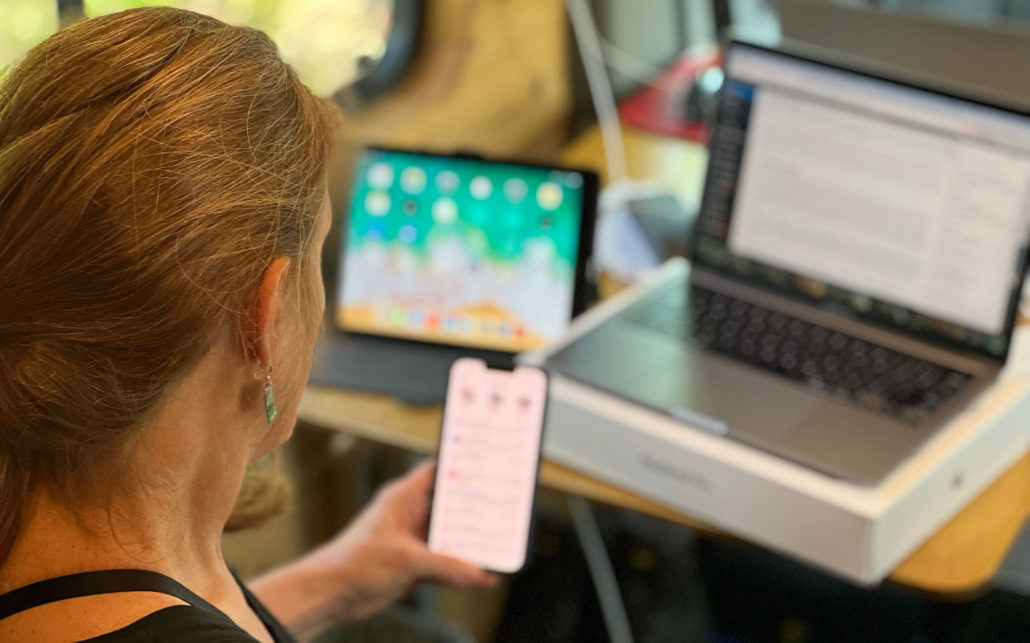 I read in a “local’s” blog prior to our arrival in Alaska that we might have trouble with connectivity while in Alaska. Not True. In their defense I should have looked at the date it was posted. But we’ve had amazing connectivity. We use #Verizon as our carrier and for the most part we’ve had exceptional connectivity. Maybe I’m so pleasantly surprised because I was expecting to be off the grid and disconnected. Now, that being said, we can’t speak to other carriers but we’ve seen so many cell towers and the libraries that offer WiFi in Alaska are amazing! So my advice is “connect away friends”.
I read in a “local’s” blog prior to our arrival in Alaska that we might have trouble with connectivity while in Alaska. Not True. In their defense I should have looked at the date it was posted. But we’ve had amazing connectivity. We use #Verizon as our carrier and for the most part we’ve had exceptional connectivity. Maybe I’m so pleasantly surprised because I was expecting to be off the grid and disconnected. Now, that being said, we can’t speak to other carriers but we’ve seen so many cell towers and the libraries that offer WiFi in Alaska are amazing! So my advice is “connect away friends”.
At the last minute we bought a Garmin InReach Mini2 GPS tracker thinking we needed something just in case we were without connection. I think that is still a good idea if you are going out into the bush because it has a nice SOS feature, but other than that we really didn’t need the unlimited data feature which is a subscription option with this device.
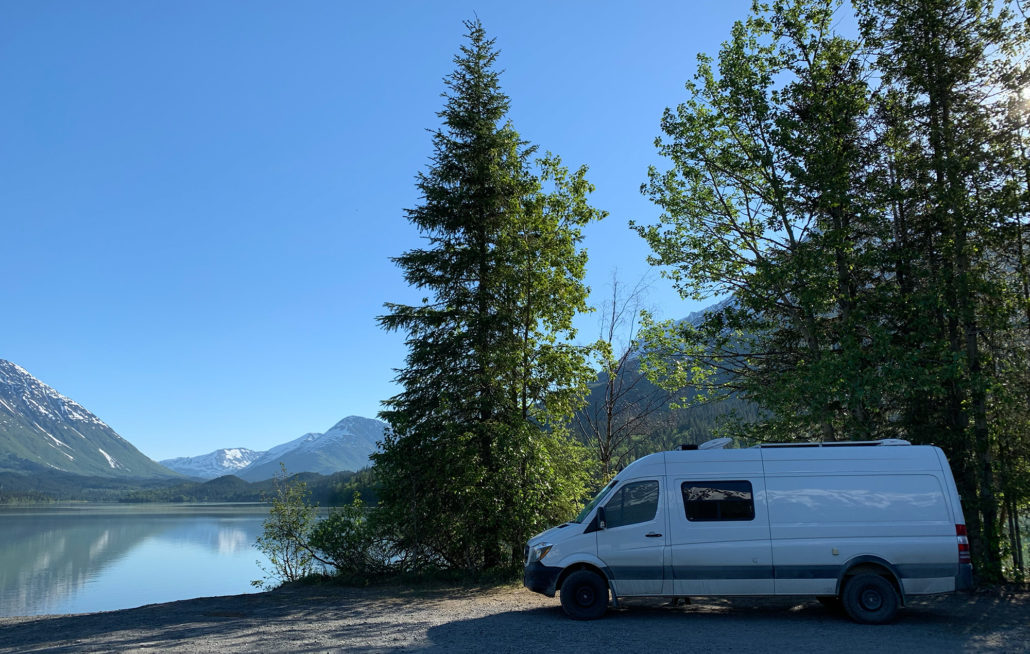
3. Dispersed Camping
We’ve been in Alaska for 7 weeks and haven’t had to pay for a campsite yet. We have stayed in a few parking lots or a pull over near the highway but rarely is that the case. It’s been such a treat to find so much dispersed camping and boon docking in Alaska. And now, it’s become almost a challenge to try to find camping that is off the beaten path. Don’t get me wrong, there are plenty of campgrounds all over the state and to prove it we’ve been using a wonderful book called “Traveler’s Guide to Alaskan Camping” by Mike and Terri Church, it is an invaluable resource into traveling in Alaska in an RV. Our friends back home let us borrow their copy and we loved it so much we bought our own. Also having solar panels for battery charging has been a game changer in that it has enabled us to stay in camping spots where we don’t have a hook up. In fact we haven’t had to plug in once since we’ve been here.
Remember with boon docking or dispersed camping that “good etiquette is to pack it in and pack it out”. Leave a place better than you found it.
We have noticed that there aren’t many places to throw away garbage easily, which is really unfortunate. One gorgeous place we stayed near some mountain bike trails was littered with standard garbage, like used tissue paper, pop cans, chip wrappers, etc. And after we picked it all up it fit into a grocery bag, so not much garbage per se. But later when we went riding the mountain bike trails we found all this trash scattered all over the trails. I’ve never seen such destruction before and I was really befuddled at all this shredded and strewn out garbage on the trail. Seriously!? I was angry that someone could be so inconsiderate. Then I figured it out. I bet someone left their trash at the overnight site, and animals found the garbage and dragged it into the woods and chewed it into shreds and scattered it onto the trails.
This has become quite a pet peeve of ours to the point that we often clean up the garbage left behind by others.
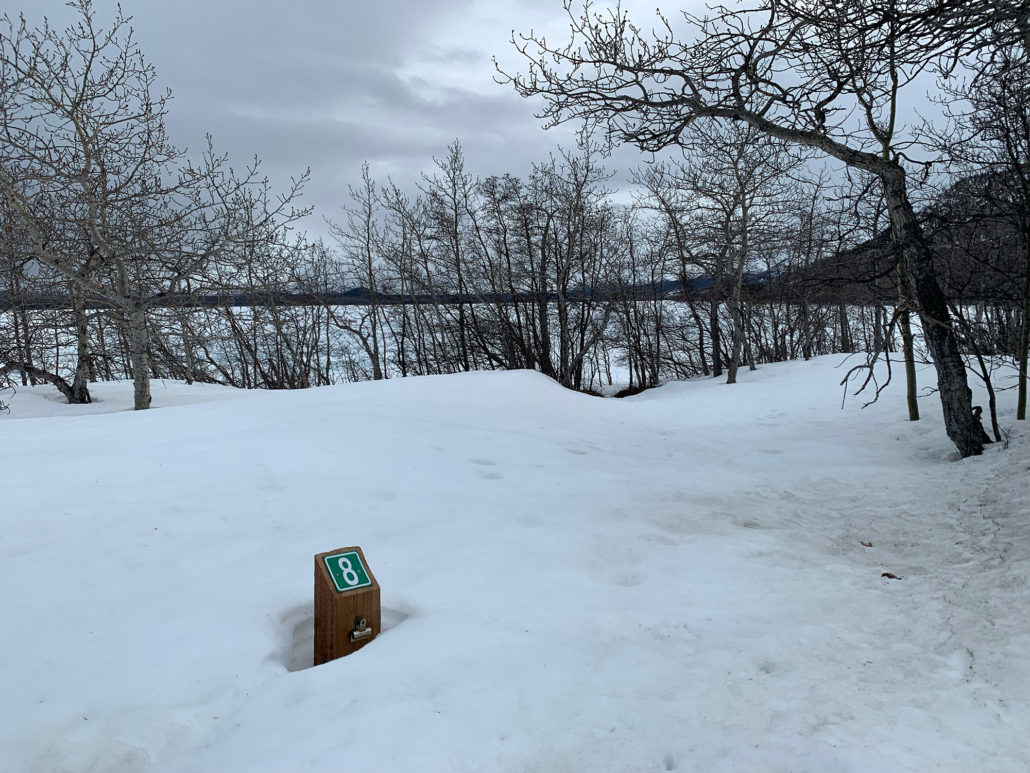
4. Snowed In
There is a caveat to having all this wonderful dry camping, dispersed camping or boon docking for the taking. We were able to camp in some campgrounds that weren’t open yet so we didn’t have to pay but a lot of them were also snowed in and you couldn’t reach the sites. Sometimes we camped at the closed entrance gate. They didn’t have any services available so again “Pack it in and Pack it out” comes into play.
My thought on this at the time was “we’ll just have to come back”. We are traveling with an open ended schedule which means we have an unlimited amount of time we can travel and stay places. If you can do this I highly recommend it! If you can’t, keep that in mind while you are planning your trip and prepare accordingly. Maybe that’s why June, July and August are such popular camping months in Alaska.
5. Hiking Boots, MicroSpikes and Xtra Tuffs
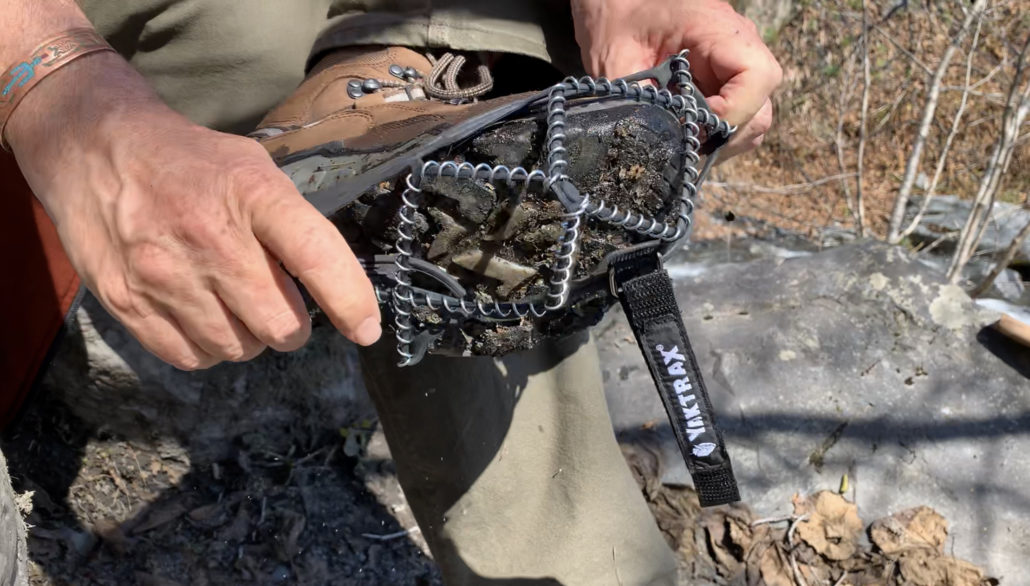 I returned the mukluks I specifically purchased for the Alaska Iditarod when we postponed our original travel plan. I am very grateful I decided to buy hiking boots as they have been much more practical for spring and summer in Alaska.
I returned the mukluks I specifically purchased for the Alaska Iditarod when we postponed our original travel plan. I am very grateful I decided to buy hiking boots as they have been much more practical for spring and summer in Alaska.
Just before leaving for Alaska we did a hike with our daughter and wished we would have had some Yaktrax. If you don’t know what those are, they are pull on devices that stretch over the bottom your hiking boot with metal rings spiraled and criss crossed on the bottom of your shoe or boot. They give you extra traction walking in the snow or ice. We bought some before our trip to AK.
Fast forward to mid May and we are hiking up to the Harding Ice Field with a fair amount of snow and steep terrain, when we asked another fellow hiker who was on his way down how it looked up ahead. He described mostly snow but super steep. He said we’d be fine with Ice Spikes. Hmmmm?? I’d heard of crampons and figured if we had to use those we shouldn’t even be on this hike but I hadn’t heard of Ice Spikes.
As it turns out they are another variation of added footwear you can buy that is very similar to Yaktrax (~$50US) and not that much more expensive called MicroSpikes (~$70US). You definitely will want to invest in these items if you plan to do any hiking during spring or early summer or if you plan on going to higher elevations and want to navigate in the snow and ice. Also having a good hiking app is essential. Although a lot of trail heads are labeled at the start there isn’t reliable signage on the trail once you are hiking it and if you are trekking in the snow a good gps trail app is invaluable. We like AllTrails.
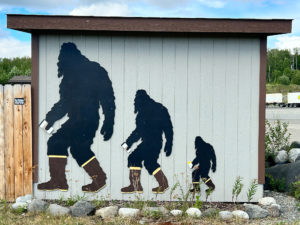 Do you know how to tell a local from tourist?
Do you know how to tell a local from tourist?
A local wears Xtra Tuffs and tourists don’t. Xtra Tuffs are these amazing waterproof boots, much like a rain boot, made especially for wet and sloppy conditions, like working on boats. We’ve seen people in Alaska wear them all the time and everywhere. They are as ubiquitous as Birkenstocks at Woodstock. I think they are also referred to as “Breakup Boots”. They are classically mud brown in color and have cream colored soles. They keep your feet dry and the traditional ones go knee high but we’ve seen variations on those, ranging from ankle boots to knee high length and vary in price. (~$90-120US)
Also a local can be found wearing shorts and flip flops when the weather is sunny and 40 degrees Fahrenheit. At the same time a tourist will be all bundled up when it’s 60 degrees out and they will be taking pictures of their camper with a gorgeous mountain scene behind it. Which one are we?
We met four women traveling together that had on a similar style boot but the boots were black. Hence they called themselves the “Black Boot Ladies”.
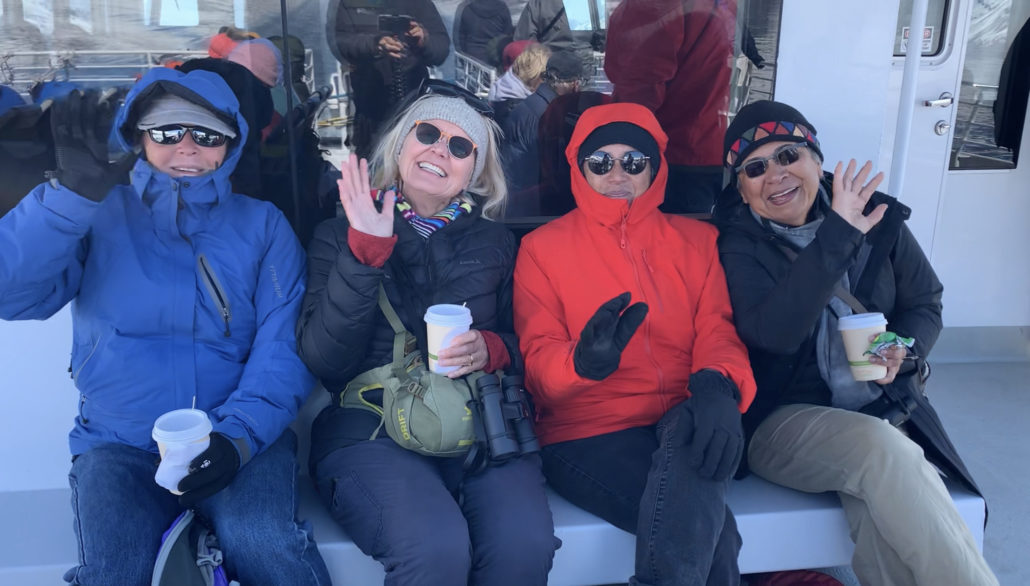
It has been so much fun meeting people from all over and getting to know them. Locals and tourists alike.
6. Groceries
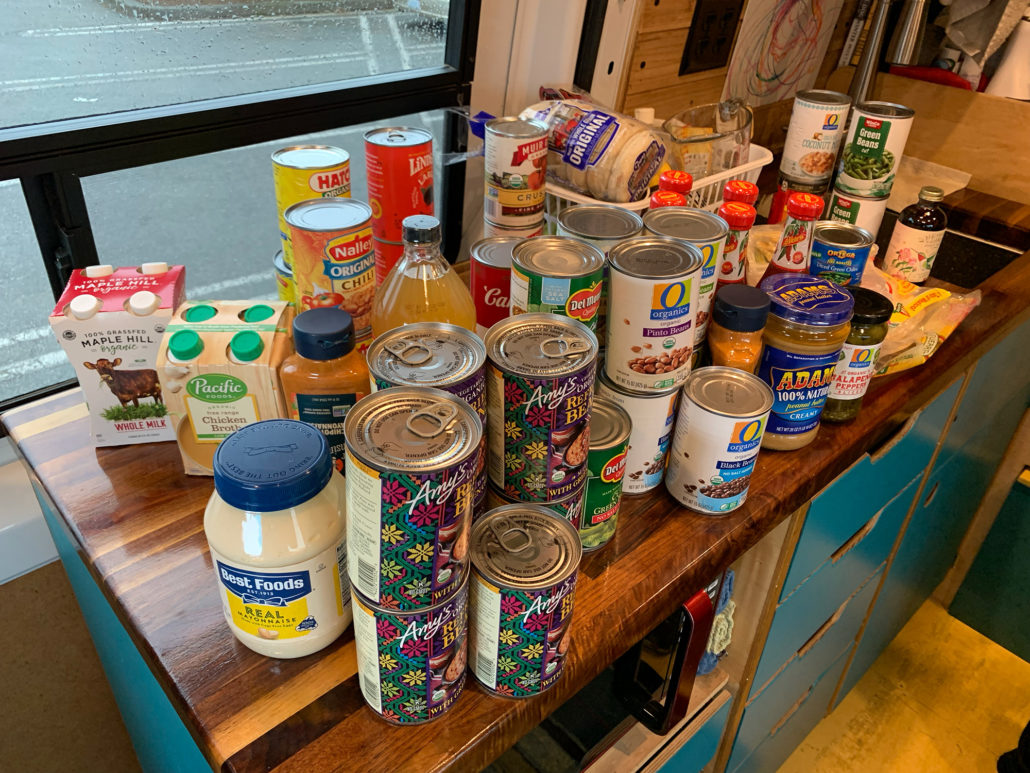 Depending on your location in Alaska groceries may be higher priced and less available than you are used to. For example, I bought a $7 head of Cauliflower in Skagway because I panicked that I wouldn’t have anything fresh to eat. Essentially the more remote you are the more expensive and the less you will find available. The closer to the cities you get the more you will find available and for a better price. If you are able, stock up while near the cities. In general it’s still more expensive than in the lower 48, even shopping at Costco is a little more expensive.
Depending on your location in Alaska groceries may be higher priced and less available than you are used to. For example, I bought a $7 head of Cauliflower in Skagway because I panicked that I wouldn’t have anything fresh to eat. Essentially the more remote you are the more expensive and the less you will find available. The closer to the cities you get the more you will find available and for a better price. If you are able, stock up while near the cities. In general it’s still more expensive than in the lower 48, even shopping at Costco is a little more expensive.
I’m so glad we decided to stalk up on dry goods, like nuts and dried fruit and canned goods before we left for Alaska. It was worth it. That being said we’ve also found pretty much everything we need. There is a really nice Natural Pantry in Anchorage if you are into organic foods like we are. And FYI – there are no Amazon hub lockers in Alaska from what we have ascertained but if you need to order something and have it shipped to you, you can ship to most UPS stores. I’d check in the particular UPS store first to see what their recommendations are.
7.Laundry/Shower Combo
We’ve found laundry facilities with showers in them as well. How cool is that? So Cool. We’ve never seen anything like it elsewhere but here in Alaska. You won’t find any Love’s Truck Stops or Pilot Travel Centers for showers, but there are available showers at most harbor ports.
 So far our favorite app to find these places is iOverlander, not only can you find dispersed camping with relative reliability but you can find places to fill with water, a dump station, places to do laundry and take a shower. We do have the ability now to take a DIY shower outside our van but sometimes you just need a real shower.
So far our favorite app to find these places is iOverlander, not only can you find dispersed camping with relative reliability but you can find places to fill with water, a dump station, places to do laundry and take a shower. We do have the ability now to take a DIY shower outside our van but sometimes you just need a real shower.
8. Mosquitos
 These sneaky little bastards are gigantic in Alaska. They are like mutant size mosquitos but stealthy. At first I was really thankful for that. It’s nice to be able to see them to kill them. At first they didn’t seem interested in us. I think that is because they weren’t fully awake yet. Or maybe they were the males. Apparently male mosquitos don’t bite. And they aren’t as horrible as the New Zealand Sand Flies (those little creatures are just pure evil). But mosquitos in Alaska are a nuisance just the same.
These sneaky little bastards are gigantic in Alaska. They are like mutant size mosquitos but stealthy. At first I was really thankful for that. It’s nice to be able to see them to kill them. At first they didn’t seem interested in us. I think that is because they weren’t fully awake yet. Or maybe they were the males. Apparently male mosquitos don’t bite. And they aren’t as horrible as the New Zealand Sand Flies (those little creatures are just pure evil). But mosquitos in Alaska are a nuisance just the same.
Some things we’ve learned is they don’t like the “Natural Bug Repellent” the one made with essential oils like do TERRA, Hurray!!! Well at least not very much. I still got bit through my socks (no bug repellent). But covering up with loose clothing over your body parts should at least prevent the majority of them. (I’ve read the recommended number one product to use is DEET, but I just can’t get my head around putting a chemical on my body that can melt plastic!)
If you do manage to get bitten, like I invariably do, don’t scratch with your fingernails no matter how good that feels, it can lead to infections. Rub your bites with a dry washcloth. And/or apply an over the counter hydrocortisone cream or a mix of some baking soda and water into a paste and apply it to the site, that helps stop the itch. Last resort you can take an antihistamine like Benadryl or Diphenhydramine (generic).
9. BEARS, Moose and Wolves.
These animals make Alaska their home and we want to coexist without encroaching on their territory. Also for our own safety we’ve done a bit of research on how to behave in the wilderness. As of this writing we haven’t encountered a bear on the trail, but we’ve seen bear footprints and bear scat. We’ve seen a few moose and plenty of moose scat. We’ve never been close enough to touch one, nor would we want to. And if you’ve seen our moose video, you know we’ve seen a wolf chasing a moose down the Alaskan Highway. That was so crazy. Listed below is what we’ve learned so far……..
Good common sense states not to get between any wild animal and their babies. Right!? Don’t feed wild animals or pet them. I know this sounds a bit ridiculous but people actually do it.
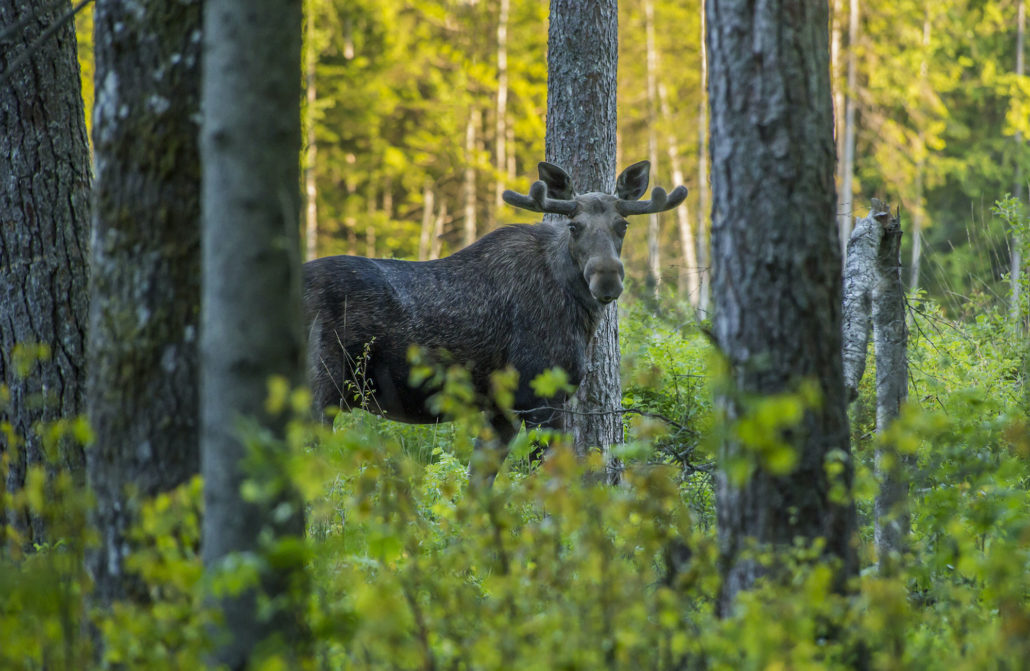
If you come across a moose, try to avoid them or give them plenty of room, especially if they have calves nearby. (Tim likes to call baby moose, “Mooseli”). Adult moose are ginormous, they deserve a lot of room. It’s common courtesy to inform whomever you might encounter on a trail to warn them of your moose sighting. According to the National Park Service website, if you find yourself being attacked by a moose, you can run away from them. Apparently they won’t chase you and if they do it won’t be very far. You can also position yourself behind something solid and sturdy like a tree, in between you and the moose. If a moose does knock you down they recommend curling up in a ball and protecting your head with your hands. My sister who used to live in Alaska years ago gave me a bit of advice: “Don’t honk your horn at a moose, they will most likely chase you”. Good to know.
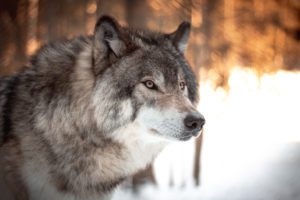
According to BC Parks, if you encounter a wolf or wolves, begin scare tactics immediately. Don’t run. Similar to encounters with wild cats, make yourself look bigger than you are by raising your arms and waving them in the air. Begin shouting and throwing rocks or use an air horn to make a loud noise. We bought one called “EcoBlast”. It’s a refillable air horn with a powerful 120 db of sound. I love it because you can refill it with a bike pump, it’s so easy to use, and it’s deafeningly effective. Also you should keep eye contact with the wolf and back away. That being said, according to the Alaska Department of Fish and Game, wolves are not typically as aggressive towards humans as Moose or Bears can be. The one we saw chasing the moose while driving on the highway was bigger than a dog and once he knew we were right behind him he darted into the woods.
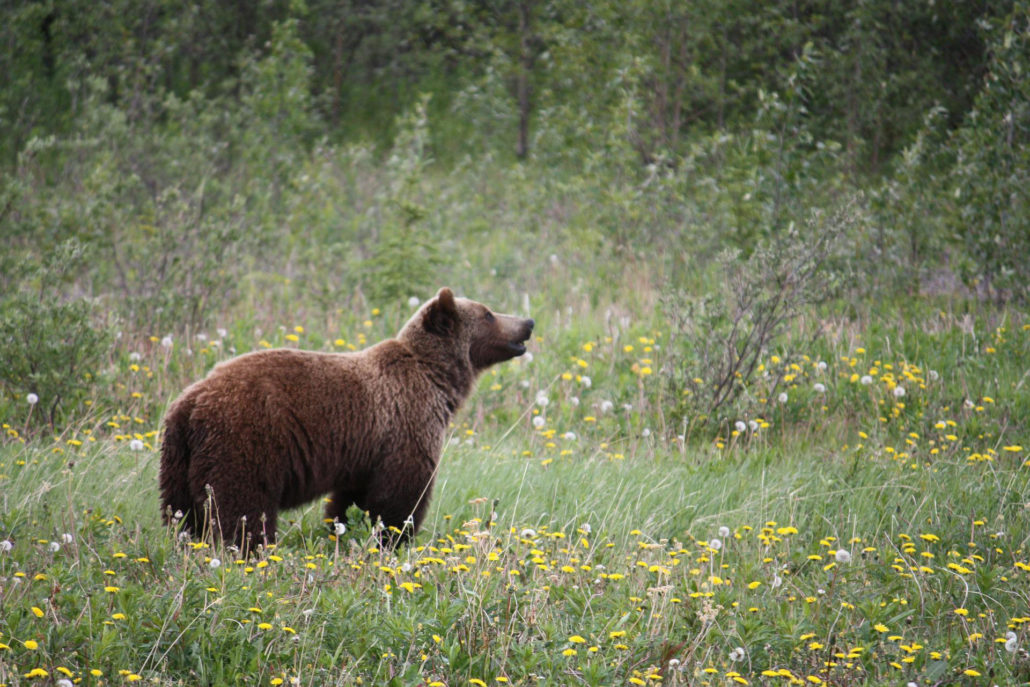
Bears seem to be the highlight of Alaska. In that I mean every trail we go on seems to have plenty of bear warning signs and a list of Do’s and Don’ts as far as bear safety goes. So I’ve saved the best for last. Our conclusion so far is that we must be doing something right because we haven’t seen a single bear on the trails or out camping. The only one was on the side of the road foraging for roots and we were driving at the time. We’ve seen bear prints in the mud and snow and we’ve seen bear scat. I think I may have seen bear vomitus. I assumed it was bear because it was partially digested berries and there were a lot of them. I was alone at the time and happy to turn around, all the while singing out of tune.
There are two types of bears, black and brown (grizzly) bears. Grizzlies are bigger and have a hump on their back between their shoulders. They also weigh more than a black bear. It’s important to know which one you are dealing with if possible, because you should act differently according to which one it is.
What we’ve learned is there is a bit of conflicting information out there.
In general though, keep your campsite clean, store your food away from your camp site, and make lots of noise while hiking so you don’t startle them or surprise them. Hike in groups if you can. Groups tend to make more noise and when standing together look bigger. Don’t run or climb a tree. If you run you appear to them as prey. Also stand your ground and look as big as you can. Talk to the bear so it knows you are human. Keep eye contact and back away in the direction you came from if you can.
So far our experience has been seeing couples or solo people out with their dogs hiking on trails. Most people carry bear spray readily available, like on a hip holster or in a water pouch on a backpack. Bear spray is what some of the outfitters we’ve talked to say to carry. It’s about the same cost as the air horn (~$50US). You’ll want to know how to use it properly. The bear spray is only as good as it’s deployer. But if you find yourself in the situation where you need to use bear spray make sure the bear is close enough that the bear spray will be effective.
Don’t use bear spray if the wind is blowing towards you, the last thing you want is the bear spray to incapacitate you. Bear spray should also be the last thing you should try to deter a bear.
It’s made of capsaicin pepper so try not to get it on your hands or near your face. Oh and it won’t work if you apply it to your clothes or campsite. It’s not a preventive spray.
We found out we are able to carry it over the border between the US and Canada, but you won’t be able to fly with it on an airplane. In addition we’ve heard lots of bear bells, mostly on dogs which makes sense. So talking loudly and making a lot of noise is the simplest solution. Be smart and be aware of your surroundings. Pay attention to signs of bears like prints and fresh scat.
If you are confronted by a bear, stand your ground. Don’t run. Make yourself look big by raising your arms or spreading out your jacket. You are supposed to talk in low soft tones to the bear. Supposedly if the bear gets up on its hind legs it’s curious about you, not threatening. Don’t freak out. Remain calm. Back away in the direction you came from if you can.
If you end up with a bear attacking you, and it’s a black bear try to fight back with any object directed at its face or muzzle. Don’t play dead. Typically though these bears are not aggressive.
On the other hand, if you encounter an aggressive grizzly bear that won’t leave you alone with everything else you’ve tried so far, you will want to play dead. Lay down on your abdomen and cover your head with your arms. Spread your legs to make it harder for the bear to turn you over.
We’re only half way through our Alaskan adventure and there is so much more to see and do. We hope you get a chance to visit this amazing state. If you can’t we’ll visit it for you. We are by no means experts and recommend that you do your research as well. We love hearing your comments and responses, so don’t be shy. T&S

7 thoughts on “9 Things We’ve Learned So Far as Newbies in Alaska”
Just an add on to the bear spray tips. You need to wait until the bear is about 10 Ft from you and point the spray forward and down, about a 10 second spray! Bears walk with their snout down, they will breathe in the spray and hopefully leave the area!
Hope we get to meet up!
We were the couple that rode by on mountain bikes at the biking area you were camping at in Soldotna. The trash that was scattered all through the woods was brought in by the eagles. There is a landfill across the hiway that they [scavenge from] year round. They grab a claw full of garbage and head to their favorite spot within a mile (in all directions) and eat on it then drop it. It sucks but what do you do?
Ah, Mystery solved. Thank you for the comment. And hope you two are having an amazing adventure as well. It was fun meeting you both.
Hi Tim and Shannon,
Nice running into you guys at Portage Glacier and thanks for sharing your story with me.
Yes is was great to meet you and share that hike with you! Safe travels!
Great suggestions Tim and Shannon. Hope we make it to Alaska someday to try some of them out!
You’ll be glad you did!